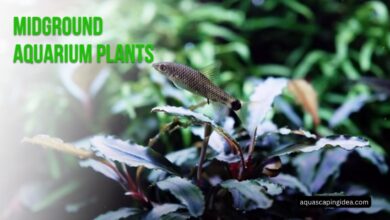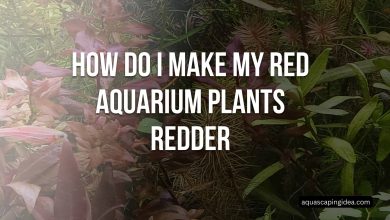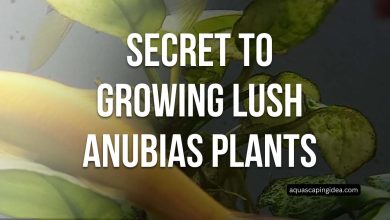How to Keep Aquarium Plants Alive?
Imagine peering into your aquarium and seeing a lush, vibrant underwater forest teeming with life. Aquatic plants not only enhance the beauty of your tank but also play a crucial role in maintaining a healthy ecosystem for your fish. However, keeping aquarium plants alive and thriving can be challenging for many hobbyists. In this comprehensive guide, we’ll dive deep into the art and science of aquarium plant care, providing you with expert tips and strategies to transform your tank into a thriving underwater paradise.
Understanding the Basics: What Aquarium Plants Need to Survive
Before we delve into specific care techniques, it’s essential to understand the fundamental needs of aquarium plants. Like their terrestrial counterparts, aquatic plants require several key elements to flourish:
- Light
- Nutrients
- Carbon dioxide (CO2)
- Proper water parameters
- Substrate
Let’s explore each of these elements in detail to lay the foundation for successful aquarium plant care.
Lighting: The Key to Photosynthesis
The Importance of Proper Lighting
Light is arguably the most critical factor in keeping aquarium plants alive. It drives photosynthesis, the process by which plants convert light energy into chemical energy, allowing them to grow and thrive. Without adequate lighting, even the healthiest plants will struggle to survive.
Choosing the Right Lighting System
When selecting a lighting system for your planted aquarium, consider the following factors:
- Intensity: Measured in PAR (Photosynthetically Active Radiation) or lumens
- Spectrum: Full-spectrum lights that mimic natural sunlight are ideal
- Duration: Most plants require 8-10 hours of light per day
Table: Lighting Requirements for Different Plant Types
| Plant Type | Light Intensity | Daily Duration |
|---|---|---|
| Low-light | 10-30 PAR | 6-8 hours |
| Medium-light | 30-50 PAR | 8-10 hours |
| High-light | 50+ PAR | 10-12 hours |
LED vs. Fluorescent: Making the Right Choice
Modern LED lighting systems have become increasingly popular due to their energy efficiency and customizable spectrums. However, T5 or T8 fluorescent bulbs can also provide excellent results. Here’s a quick comparison:
- LED Pros: Energy-efficient, long-lasting, customizable spectrum
- LED Cons: Higher initial cost
- Fluorescent Pros: Affordable, widely available
- Fluorescent Cons: Bulbs need regular replacement, less energy-efficient
Whichever system you choose, ensure it provides adequate intensity and spectrum for your specific plant species.
Nutrients: Feeding Your Underwater Garden
The Role of Nutrients in Plant Growth
Just like terrestrial plants, aquatic plants require a variety of nutrients to grow and thrive. These nutrients are divided into two categories:
- Macronutrients: Nitrogen (N), Phosphorus (P), Potassium (K)
- Micronutrients: Iron (Fe), Magnesium (Mg), Calcium (Ca), and trace elements
Fertilization Strategies
There are several approaches to providing nutrients to your aquarium plants:
- Substrate Fertilization: Using nutrient-rich substrates or root tabs
- Liquid Fertilizers: Adding liquid fertilizers directly to the water column
- DIY Solutions: Creating custom fertilizer mixes for advanced hobbyists
Choosing the Right Fertilizer
When selecting a fertilizer, consider the following:
- Plant Density: Heavily planted tanks require more nutrients
- Fish Load: Fish waste provides some nutrients, but may not be sufficient
- Plant Species: Some plants are heavy root feeders, while others absorb nutrients from the water column
The Importance of Balance
While nutrients are essential, it’s crucial to maintain a balance. Over-fertilization can lead to algae blooms and poor water quality. Start with a low dosage and gradually increase as needed, monitoring your plants’ growth and overall tank health.
Carbon Dioxide (CO2): The Often Overlooked Essential
Understanding the Role of CO2 in Plant Growth
Carbon dioxide is a vital component of photosynthesis. In nature, aquatic plants have access to atmospheric CO2, but in a closed aquarium system, CO2 can quickly become a limiting factor for plant growth.
Methods of CO2 Supplementation
- Pressurized CO2 Systems: The most efficient and controllable method
- DIY CO2: Yeast-based systems for budget-conscious hobbyists
- Liquid Carbon Supplements: An alternative for low-tech setups
Balancing CO2 Levels
Proper CO2 levels are crucial for plant health and fish safety. Here are some guidelines:
- Optimal Range: 20-30 ppm (parts per million)
- Monitoring: Use a drop checker or CO2 test kit to measure levels
- pH Impact: CO2 injection can lower pH, so monitor water parameters closely
Water Parameters: Creating the Ideal Environment
Key Water Parameters for Plant Health
Maintaining appropriate water parameters is essential for both plant and fish health. Here are the key factors to monitor:
- pH: Most plants prefer slightly acidic to neutral water (6.5-7.5)
- Temperature: 72-82°F (22-28°C) is suitable for most tropical plants
- Hardness: Soft to moderately hard water (4-12 dGH) is ideal
- Nitrates: Keep levels below 20 ppm
The Nitrogen Cycle and Plant Growth
Understanding the nitrogen cycle is crucial for maintaining a healthy planted aquarium. Plants play a vital role in this cycle by:
- Absorbing nitrates, reducing the need for water changes
- Competing with algae for nutrients
- Providing oxygen through photosynthesis
Substrate: The Foundation of Your Underwater Garden
Choosing the Right Substrate
The substrate serves several important functions in a planted aquarium:
- Anchoring plant roots
- Providing nutrients (in enriched substrates)
- Harboring beneficial bacteria
Popular substrate options include:
- Aqua Soil: Nutrient-rich and ideal for planted tanks
- Sand: Inert and suitable for low-tech setups
- Gravel: Provides good water flow but may require root tabs
Substrate Depth and Layering
For most planted aquariums, aim for a substrate depth of 2-3 inches. Consider using a layered approach:
- Bottom layer: Nutrient-rich substrate or soil
- Middle layer: Fine gravel or coarse sand
- Top layer: Decorative sand or small gravel
This layering helps prevent nutrient leaching while providing an attractive appearance.
Maintenance: Keeping Your Underwater Garden Thriving
Regular Pruning and Trimming
Proper maintenance is key to keeping your aquarium plants healthy and preventing overgrowth. Regular pruning:
- Encourages bushier growth
- Prevents shading of lower plants
- Maintains tank aesthetics
Algae Control
While some algae are natural in any aquarium, excessive growth can harm your plants. Control algae by:
- Maintaining proper nutrient balance
- Ensuring adequate CO2 levels
- Using algae-eating fish or invertebrates
- Performing regular water changes
Water Changes and Parameter Monitoring
Regular water changes help:
- Remove excess nutrients
- Replenish trace elements
- Maintain stable water parameters
Aim for weekly 25-50% water changes, adjusting based on your tank’s specific needs.
Choosing the Right Plants: Setting Yourself Up for Success
Beginner-Friendly Aquarium Plants
For those new to planted aquariums, start with hardy, easy-to-grow species:
- Anubias: Low-light tolerant and slow-growing
- Java Fern: Versatile and adaptable to various conditions
- Amazon Sword: Fast-growing and excellent for background planting
- Cryptocoryne: Available in various species for different tank zones
- Vallisneria: Grass-like plant that adds vertical interest
Advanced Plants for Experienced Hobbyists
As you gain experience, consider these more challenging but rewarding species:
- Dwarf Baby Tears (Hemianthus callitrichoides): Requires high light and CO2
- Red Plants (e.g., Alternanthera reineckii): Need precise nutrient balance
- Carpeting Plants (e.g., Glossostigma elatinoides): Create lush foregrounds
Troubleshooting Common Issues
Even with the best care, you may encounter some challenges. Here are solutions to common problems:
- Yellowing Leaves: Often indicates nutrient deficiency. Check fertilization routine.
- Melting Plants: Common when introducing new plants. Remove affected areas and be patient.
- Slow Growth: Check light intensity and CO2 levels.
- Algae Overgrowth: Reduce light duration, increase CO2, and balance nutrients.
FAQ: Your Burning Questions Answered
Q1: How often should I fertilize my aquarium plants?
A: It depends on your tank’s needs, but generally, liquid fertilizers can be added 1-3 times per week. Root tabs should be replaced every 3-4 months.
Q2: Can I keep plants in a fish-only tank?
A: Yes, but you may need to supplement with additional nutrients and CO2, as fish waste alone may not be sufficient.
Q3: Do I need special equipment for a planted tank?
A: While not always necessary, equipment like CO2 systems, specialized lighting, and nutrient dosing pumps can greatly enhance plant growth and health.
Q4: How do I prevent fish from eating my plants?
A: Choose plant species that are less appealing to herbivorous fish, or consider adding plant-safe deterrents to the tank.
Q5: Can I use regular potting soil in my aquarium?
A: It’s not recommended, as regular potting soil can contain harmful additives. Use aquarium-specific substrates or soil designed for underwater use.
Conclusion: Nurturing Your Underwater Oasis
Keeping aquarium plants alive and thriving is both an art and a science. By understanding and providing for their basic needs – light, nutrients, CO2, proper water parameters, and suitable substrate – you can create a stunning underwater landscape that benefits both your fish and your viewing pleasure.
Remember that every aquarium is unique, and it may take some time to find the perfect balance for your specific setup. Don’t be discouraged by initial setbacks; with patience, observation, and consistent care, you’ll soon master the skills needed to maintain a lush, vibrant aquatic garden.


